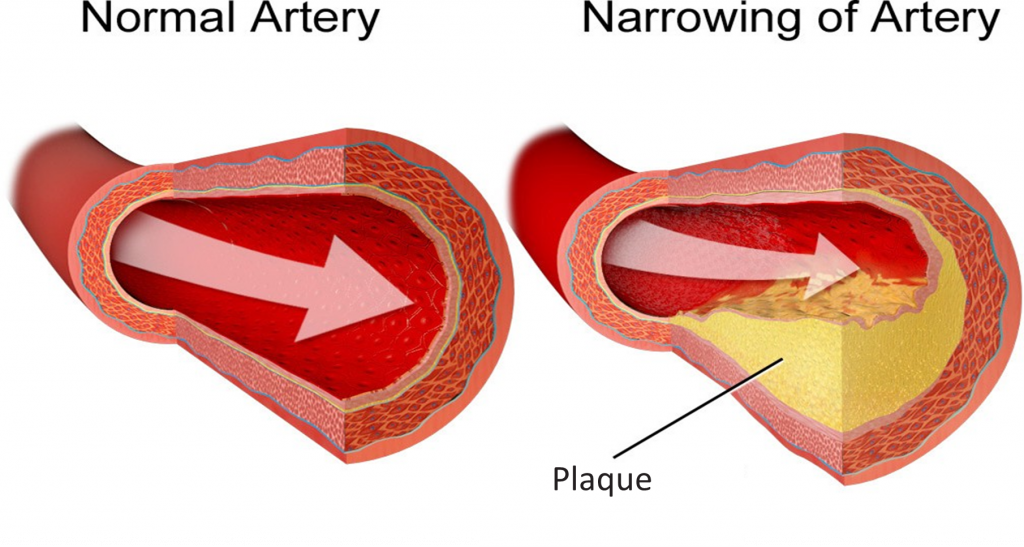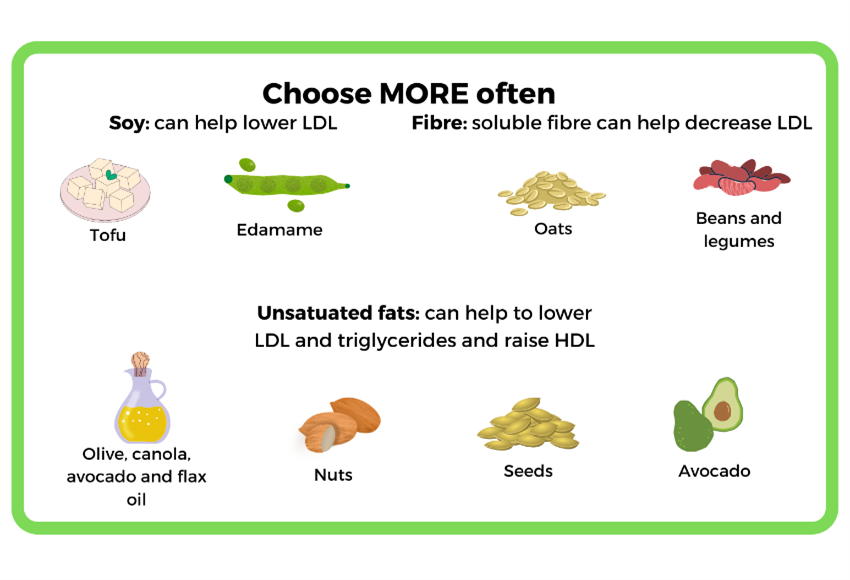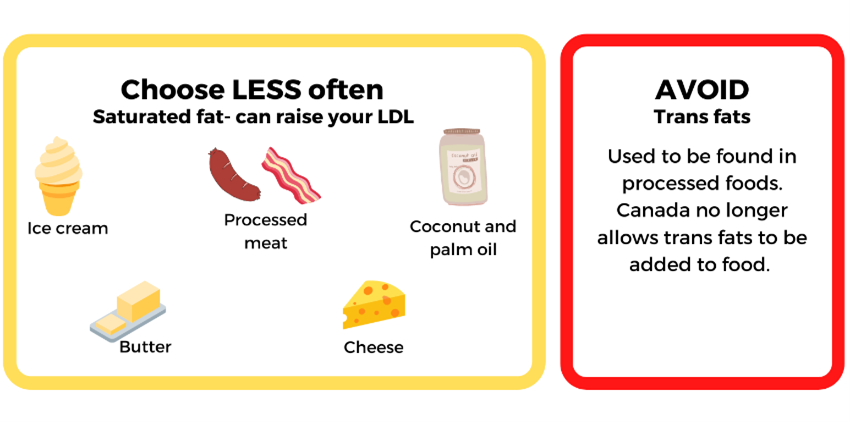Your blood fat (or lipid) levels can tell us about your risk of stroke. We can measure your blood lipid levels from a blood test. Cholesterol is one of the blood lipids and is important for many of the body’s functions. However, too much cholesterol in your blood can increase your risk of stroke and heart disease. Triglycerides are another blood lipid that can increase risk of heart disease if there is too much of it.
High Density Lipoprotein (HDL)
This is a “healthy” cholesterol that helps prevent buildup in your arteries. Having high levels of HDL is good because it can lower your risk of heart attack and stroke.
Low Density Lipoprotein (“lousy” cholesterol)

This is a “lousy” cholesterol that increases buildup in your arteries. Having high levels of LDL is bad because it can increase your risk of heart attack and stroke.
Reducing LDL and Increasing HDL with Dietary Strategies


Triglycerides
This is another type of fat in the blood that may increase the risk of heart disease
Reducing Triglycerides
- Omega-3 fats can lower triglycerides
- Fatty fish is the best source. Aim for 2 3.5 ounce servings per week. (herring, salmon, sardines, trout, mackerel)
- Plant sources include canola oil, walnuts, ground flax and chia seeds.
- Reduce added sugars and limit or avoid alcohol
- Choose water in place of sugary drinks
